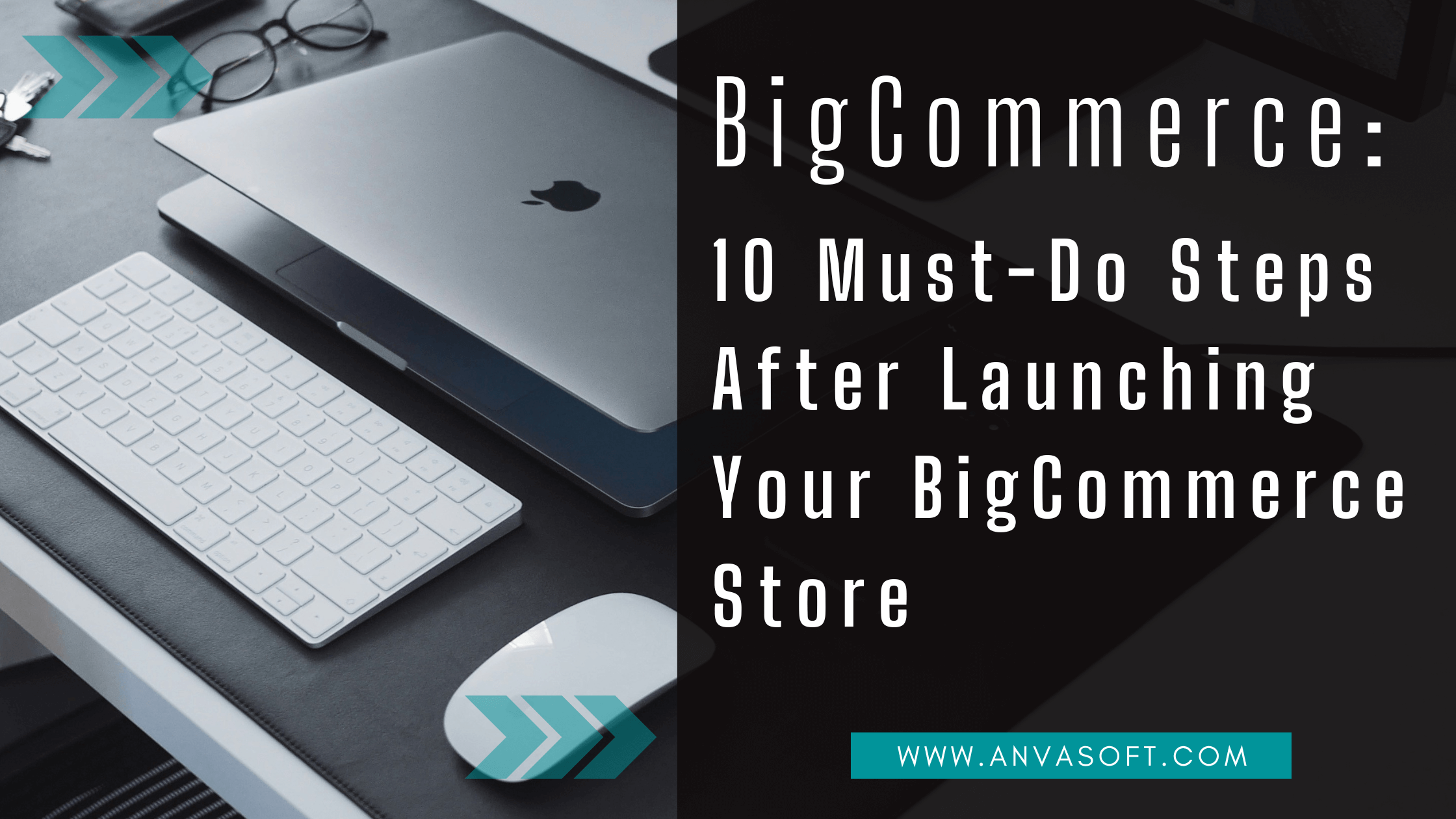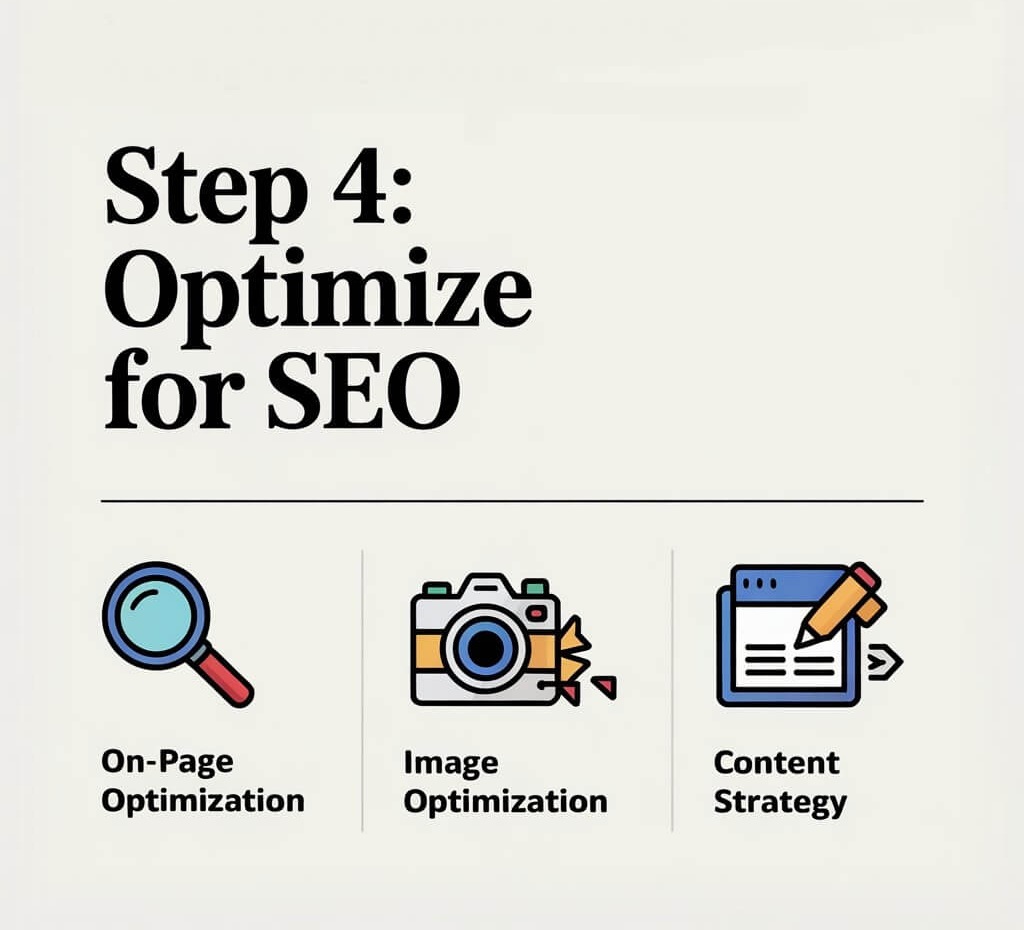Address
304 North Cardinal St.
Dorchester Center, MA 02124
Work Hours
Monday to Friday: 7AM - 7PM
Weekend: 10AM - 5PM
Address
304 North Cardinal St.
Dorchester Center, MA 02124
Work Hours
Monday to Friday: 7AM - 7PM
Weekend: 10AM - 5PM

Launching a BigCommerce store is a significant accomplishment, marking the start of your journey as an online retailer. Whether you’re selling artisan crafts, tech gadgets, or niche products, having a fully functional e-commerce platform opens the door to countless possibilities. But here’s the thing: launching your store is only the beginning.
Once your BigCommerce store is live, the real work begins. Ensuring everything runs smoothly, attracting customers, and retaining them require a strategic approach. That’s where our comprehensive BigCommerce launch checklist comes into play. We’ll walk you through ten essential post-launch steps that every BigCommerce store owner must follow to maximize success.
Launching a store without double-checking its setup is like opening a restaurant without tasting the food—it’s risky business. Start by revisiting every element of your store’s foundation to ensure it’s error-free and user-friendly.
Ensure your domain name is connected correctly. A missing or misconfigured domain can lead to downtime or redirect issues, frustrating potential customers. Equally important is activating your SSL certificate. This not only protects customer data but also boosts your store’s credibility and search engine ranking.
Meticulously review your product descriptions, images, and pricing. A typo in pricing could mean selling a $200 product for $20—yikes! Organize products into clear, logical categories to create a seamless shopping experience. Test your store’s search functionality to confirm that customers can find what they need effortlessly.
Think of navigation as your store’s roadmap. Ensure menus, links, and filters are intuitive. A well-organized navigation system keeps customers engaged and lowers bounce rates.
Your e-commerce store design is the first impression you make on potential customers. With a competitive e-commerce landscape, your store must stand out while providing an exceptional user experience.
BigCommerce offers a variety of responsive themes. Select one that aligns with your brand while ensuring mobile compatibility. With over 60% of online shoppers using mobile devices, a non-responsive design can cost you sales.
Use high-resolution images and videos to showcase your products effectively. For example, adding a video demonstration for complex products can enhance customer understanding. Be mindful of whitespace, fonts, and colors to create a professional look without overwhelming visitors.
Leverage BigCommerce’s built-in tools or third-party apps to add custom features like customer reviews, wishlists, or personalized recommendations. These extras can significantly improve user engagement and satisfaction.
A seamless checkout experience is critical for converting browsers into buyers. Setting up reliable payment gateways ensures that customers can complete their purchases effortlessly.
BigCommerce supports multiple gateways, including PayPal, Stripe, and Square. Consider your target market when choosing payment methods. For international audiences, include multi-currency options and global payment solutions.
Before going live, conduct test transactions for all payment methods. Simulate scenarios like refunds, partial payments, and failed transactions to ensure your system handles them smoothly.
Enable fraud prevention measures such as CVV checks and address verification systems. Security builds trust and protects your store from chargebacks and fraudulent activities.

SEO is your secret weapon for attracting organic traffic. A well-optimized store ranks higher on search engines, making it easier for customers to find you.
Start by crafting compelling meta titles and descriptions for each product. Incorporate keywords like BigCommerce launch checklist and related terms. Use header tags (H1, H2) to structure your content and make it more readable.
Optimize images with descriptive file names and alt text that include relevant keywords. Compressed images load faster, which positively impacts your search rankings.
Create blog posts around topics like “How to Design BigCommerce Store” or “Top E-commerce Store Design Tips.” Internal link these blogs to your product pages to enhance both SEO and user experience.
The checkout process is the final hurdle in converting a visitor into a customer. Any friction here can lead to cart abandonment.
Go through the entire checkout process as a customer. Test features like guest checkout, coupon codes, and multiple shipping addresses. Ensure that taxes and shipping fees are calculated correctly.
The fewer steps in your checkout process, the better. BigCommerce allows one-page checkouts, which are used to reduce friction and improve conversions.
Data-driven decisions are the backbone of successful online stores. Analytics provide insights into what’s working and what needs improvement.
Integrate Google Analytics with your store to track traffic sources, customer behavior, and conversion rates. Use this data to refine your marketing strategies.
BigCommerce offers built-in reporting tools that give you a bird’s-eye view of your sales performance. Regularly review reports on best-selling products, customer demographics, and abandoned carts.
No one will visit your store if they don’t know it exists. A robust marketing strategy is essential for attracting and retaining customers.
Leverage platforms like Instagram, Facebook, and Pinterest to showcase your products. Create engaging content, run targeted ads, and use influencers to boost visibility.
Build an email list by offering discounts or freebies in exchange for sign-ups. Use email campaigns to announce new products, share helpful tips, and encourage repeat purchases.
Shipping isn’t just a logistical necessity—it’s part of the customer experience. Get it right, and you’ll earn loyal fans.
Provide a range of shipping options, from standard to express delivery. Use BigCommerce’s integrations with popular carriers like USPS and FedEx to streamline the process.
Place a few trial orders to test how your fulfillment process works. Ensure that packaging is sturdy and attractive—unboxing experiences matter more than ever.
Good customer support can turn a one-time buyer into a lifelong customer. Make it easy for customers to get in touch and resolve their issues quickly.
Add a live chat widget to your site to provide instant support. BigCommerce offers integrations with tools like Zendesk for creating a robust help desk.
Create an FAQ section addressing common concerns about shipping, returns, and payments. Not only does this save time, but it also enhances the customer experience.
It’s finally time to launch! Promote your store across all channels and keep a close eye on performance metrics post-launch.
Encourage customers to leave reviews and ratings. Use their feedback to identify areas for improvement and showcase testimonials to build trust.
Your store is a work in progress. Continuously monitor performance and make adjustments based on data insights. Keep experimenting with new marketing tactics and features.
Launching your BigCommerce store is a monumental step, but the journey doesn’t end there. By following this BigCommerce launch checklist, you’ll be well on your way to building a thriving online business.
Remember, persistence and adaptability are your best friends. The e-commerce landscape is dynamic, so stay proactive and never stop learning. Your dream store is just a few optimizations away from reaching its full potential.